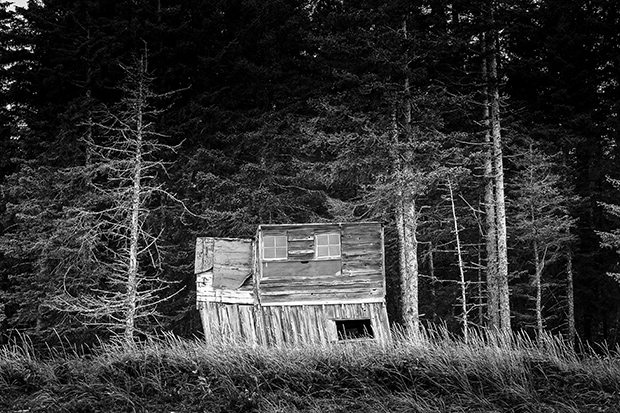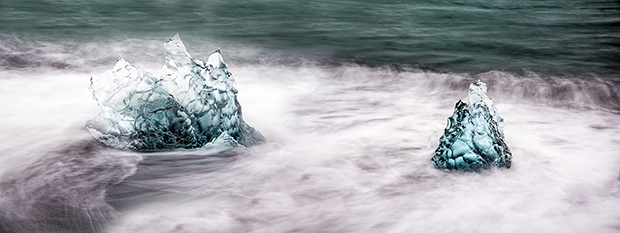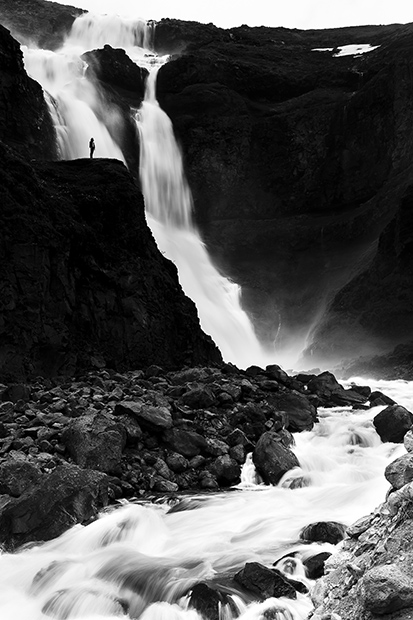In the final of our two-part series on creativity, photographer Darran Leal shares five more clever tips to help you improve your eye.
01 LEARN FROM OTHERS
I have enjoyed looking at creative works from photographers all over the world. It doesn’t matter what experience or interests you have, you can always pick up something new, or simply enjoy a beautiful image. One of my key learning tools is the hundreds of photographers I travel with all over the world each year. No two photographers shoot the same subject in the same way, so I can always find some style or technique of interest, as long as I remain open to it.
In recent times my son Pearce has opened up my eyes to new ideas and to ‘rebooting’ old ideas. He loves to shoot film, process the results and then scan selected images. He’s mixing digital with analogue technologies, and having a lot of fun doing it. I remember the fun of doing that when he was born in the early 1990s!
Related to that, I am regularly asked, 'Are some people born creative?’ To my way of thinking, the answer is yes; some people just have it from a very early age. That doesn’t mean that those with limited creativity can’t develop it over time. They may have to work harder at it, but it’s certainly possible to develop your eye, improve your composition and become more courageous with the creative decisions you make.
Shot in Alaska, this hut was too unique to pass by. I preferred it as a B&W image. I think this is important as it helps you to see such opportunities from shooting to processing and even which images use. 70-200mm lens @ 70mm, 1/90s @ f/8, ISO 400, hand held. Processed in Adobe Lightroom.
02 SHARE YOUR WORK
I own an Epson 9800 large-format printer. For several years I’ve been printing one metre long canvasses and prints as my standard size. For me, big is beautiful! On my office wall I have two, two-metre-wide panoramas along one wall. These are two of my favourite images and they catch my eye every time. I cannot recommend highly enough that you buy a quality photo printer and that you print your own images. You can learn so much more! Photobooks are also a fantastic way to present your work to others, and importantly they help you to channel your creative interests. As I discussed earlier, focus (in both the technical and creative sense) is a really useful skill to develop, and photobooks are a great exercise in developing this approach. Each year I run a book-making course and each year I am blown away by the often ‘first-time results’ we get for most of the group. It’s all about having a go and ‘visualising’ a result. With the technology available today, anyone can do it!

A shell washed up on the beach from the reef near Lord Howe Island. To maximise my creative options, I decided to drop the ISO to 50, use a polarising filter to lose two more stops of light. At f/11, I could get a shutter speed of 1/30s. This was perfect for motion blur. I got low, got a bit wet and with a super wide-angle lens I concentrated on the shell in its environment. 16-35mm lens @ 16mm, f/11 @ 1/30s, ISO 50, hand held. Processed in Adobe Lightroom.
03 ENTER COMPETITIONS
Entering photo competitions is a fantastic way to test your creativity. Competitions provide a specific challenge and, just as importantly, a deadline! They also help you to become an editor of your own work, forcing you to choose the images that best work together and fit the specified theme. Competitions are also a great way to share your images with your peers and see how others approach the same challenge. A word of warning though. Keep in mind that photography is not like a running race, where there is a clear winner. Any competition that says one piece of art is better than another has to be taken with a grain of salt. Which painting is better, Sidney Nolan’s Ned Kelly (1946) or Brett Whiteley’s Self portrait in the studio (1976)? You may have a favourite, but who is to say one of these artworks is better than the other? Choosing the winner of a photo competition is the same – it comes down to a range of intangibles, including personal taste, so don’t be too disheartened if you lose. It’s the process that’s important and entering should be as much about challenging yourself and learning as it is about winning.
Putting together an exhibition of your work is another great way to accelerate your development as a photographer. I’ve had four major exhibitions over the years, plus a permanent gallery at O’Reilly’s Rainforest Retreat for around eight years. Putting the right images together and marketing the exhibition is hard work. Exhibitions can also be costly, so be careful to budget correctly and make sure you can target a large database of people. Here’s a tip; local councils are often keen to show off local talent.

Icelandic beach scene. Canon EOS 5D Mk III, 24-105mm lens @ 105mm, 3s @ f/8, ISO 400, tripod. Processed in Adobe Lightroom.
04 PROMOTE YOURSELF
Whether you’re an amateur or professional photographer self promotion is important. For the less serious among us, promoting your work can be simply about sharing your favourite creative images. This can vary from posting them on Facebook to making a photobook or printing your images and framing them to hang on the wall. For a business, promotion is the key to success. You can have stunningly creative images, but you’ll fail as a commercial concern if you can’t get to the market and actually sell them. Buyers need to see your images!
05 ENJOY BEING CREATIVE!
Appreciating and enjoying what you do is the most important point of all. I’ve seen photographers at all levels succeed and fail. Photographers prepared to ‘have a go’ and see where the adventure will lead them often have the greatest success. In the end, setting yourself a target – immediate or long term – will allow you to push your creative boundaries, and if you can have fun and meet new friends along the way, then your photographic journey will be all the better.

Iceland offers a waterfall around nearly every corner. My son Pearce acted as a model for the group and still shot his own image by setting up his tripod and using a remote trigger. 24-105mm lens @ 42mm, Aperture Priority f/16 @ 1/4s, ISO 50, polariser, with tripod. Processed in Adobe Lightroom.






